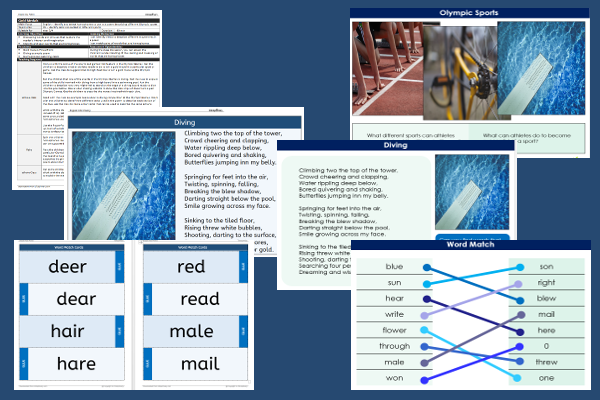Gold Medals

This English teaching pack for Key Stage Two gets the children to explore how to identify and select special vocabulary words that are homophones to work with in a poem describing some different sports and games.
The class can explain and model how to use line structures and rhyming vocabulary words to compose example poems about taking part in a sporting competition
Download this teaching pack including a lesson plan, classroom activities and an interactive presentation to explore how to identify and select special vocabulary words that are homophones to work with in a poem describing some different sports and games
Activities in this teaching pack include a shared reading text to identify and describe the use of homophones in a poem about a diving competition and a set of cards to match pairs of words that are homophones to use when composing an example poem about a specific sport or game.
The interactive presentation gets the children to explore how to identify and select special words that are homophones to use in a poem describing different sports.
This lesson is part of an English scheme of work to get the children to explain and model how to compose and present poems using special line structures and rhyming patterns to illustrate actions and themes connected to different sports. There are teaching activities for shared learning, differentiated worksheets to support independent learning and interactive presentations to introduce concepts and key skills.
-

Determinant Lists
Explain and model how to make lists of objects used and found in different locations to match the correct determinants of a and an
-

English SPAG Assessment
Assess abilities in composing sentences for fiction and non-fiction using the correct spellings, punctuation marks and grammar vocabulary phrases
-

Maths Arithmetic Assessment
Assess abilities in solving arithmetic number problems for addition, subtraction, multiplication and division when working with informal and formal written calculations
-

Environment
Identify and describe some of the special landscapes and locations that can be found in the world and reflect on how they can be protected and preserved for the future
